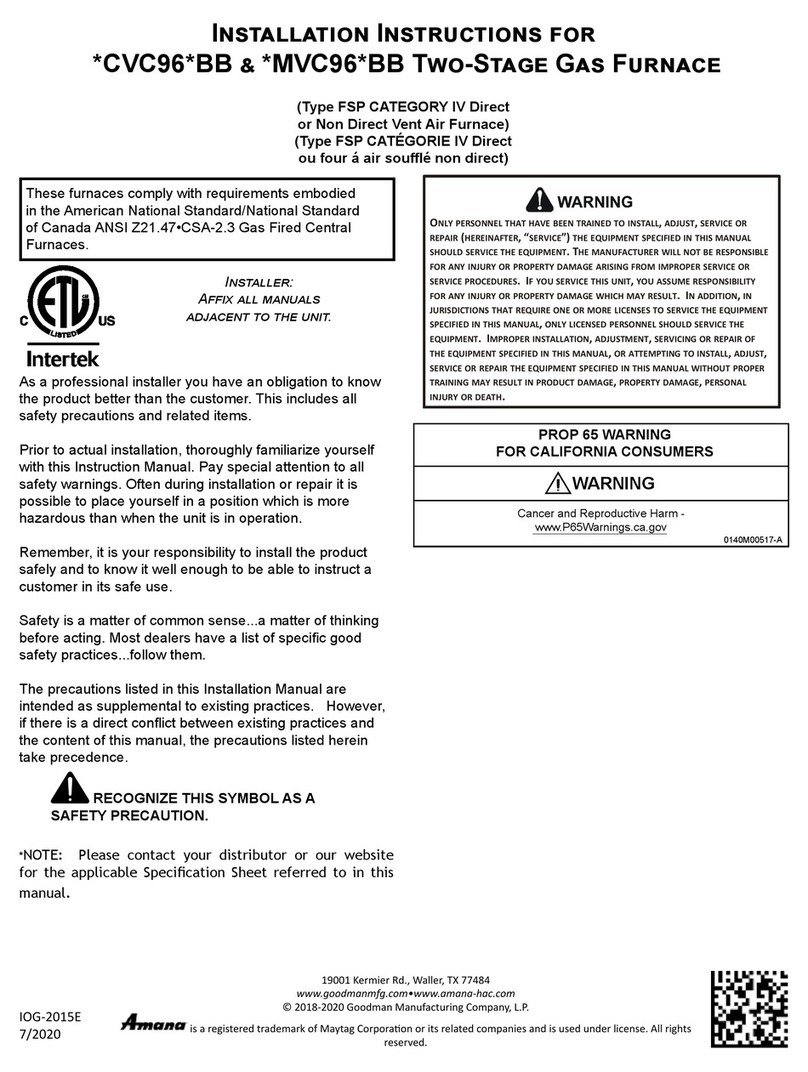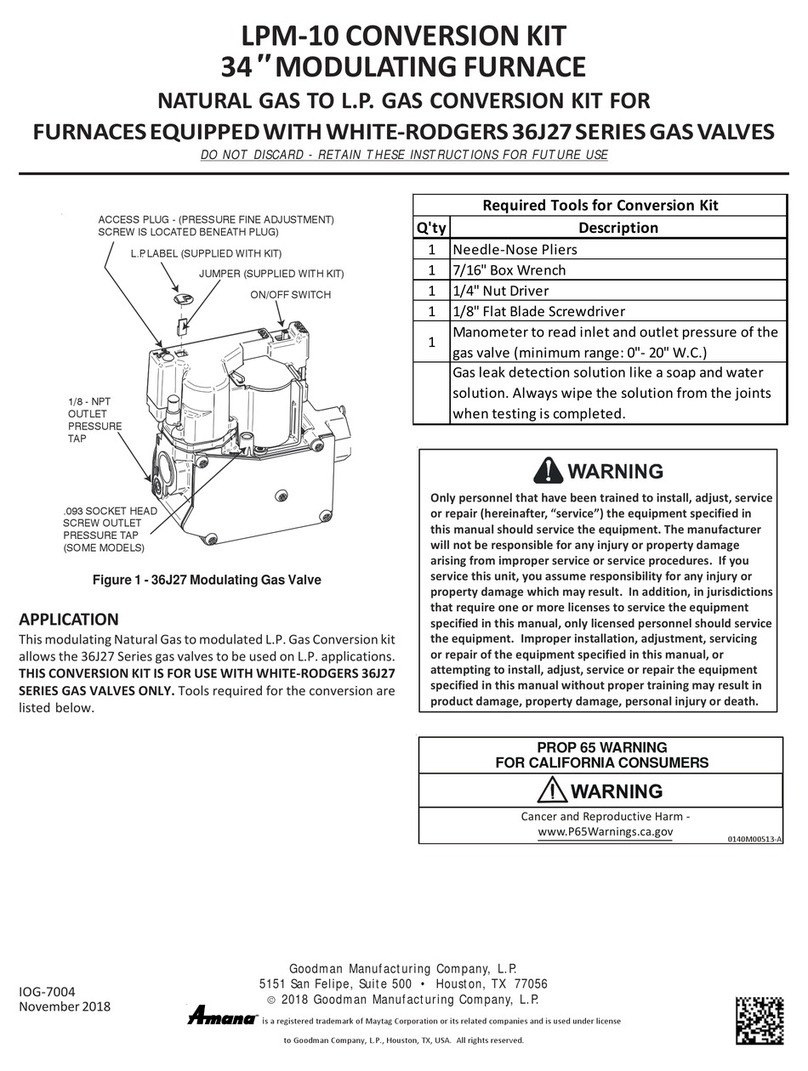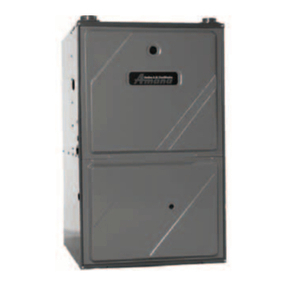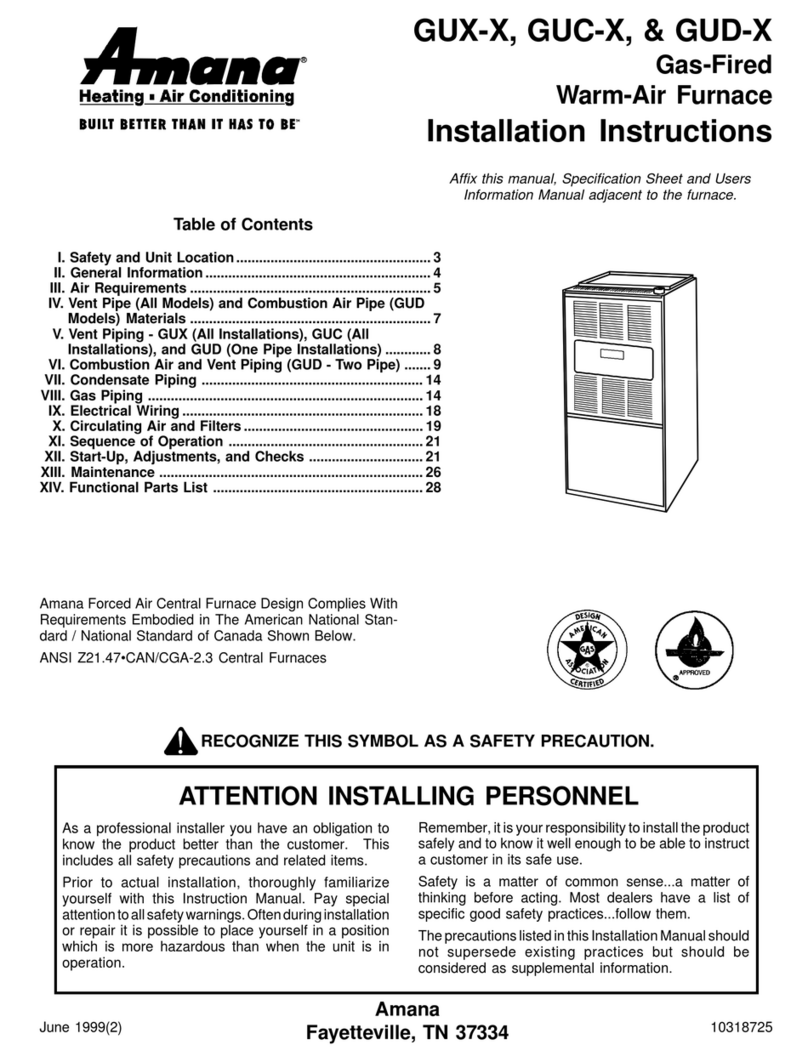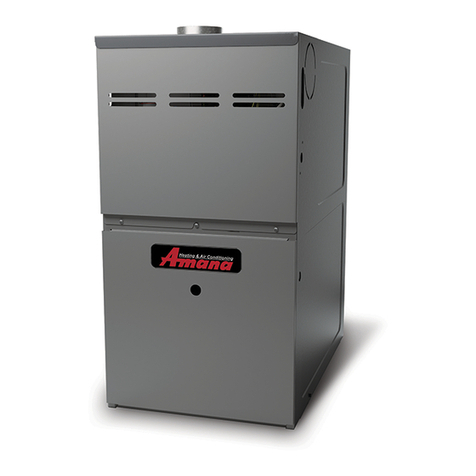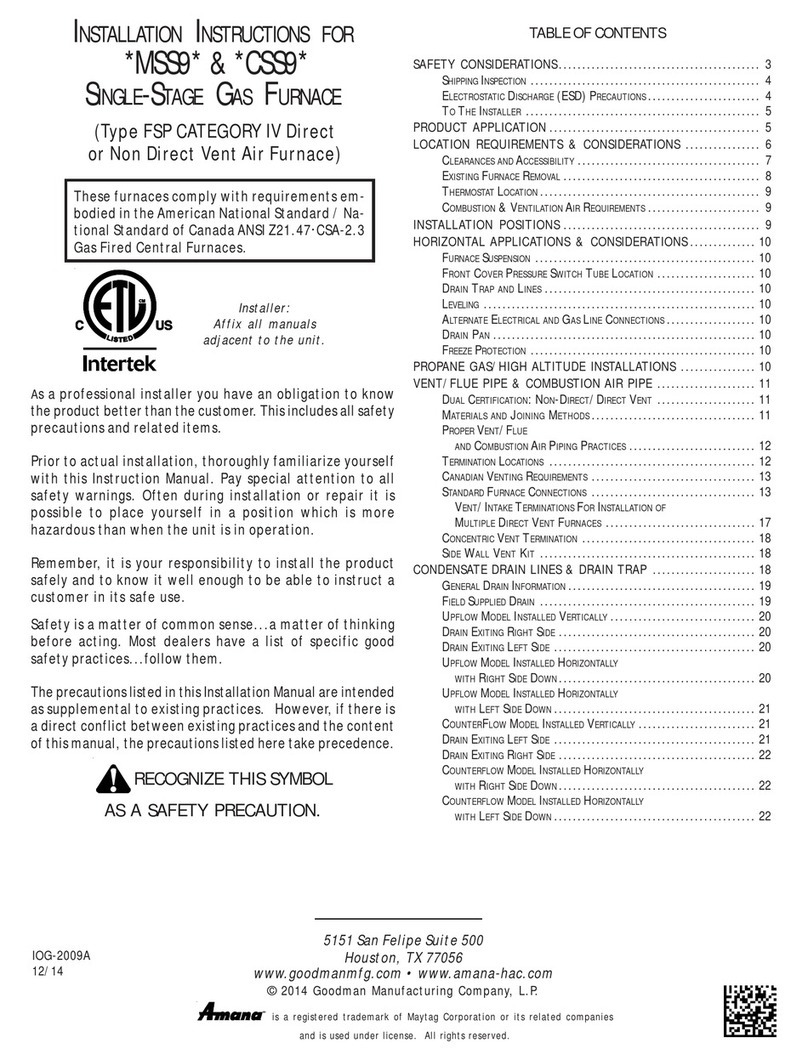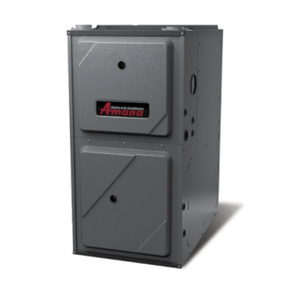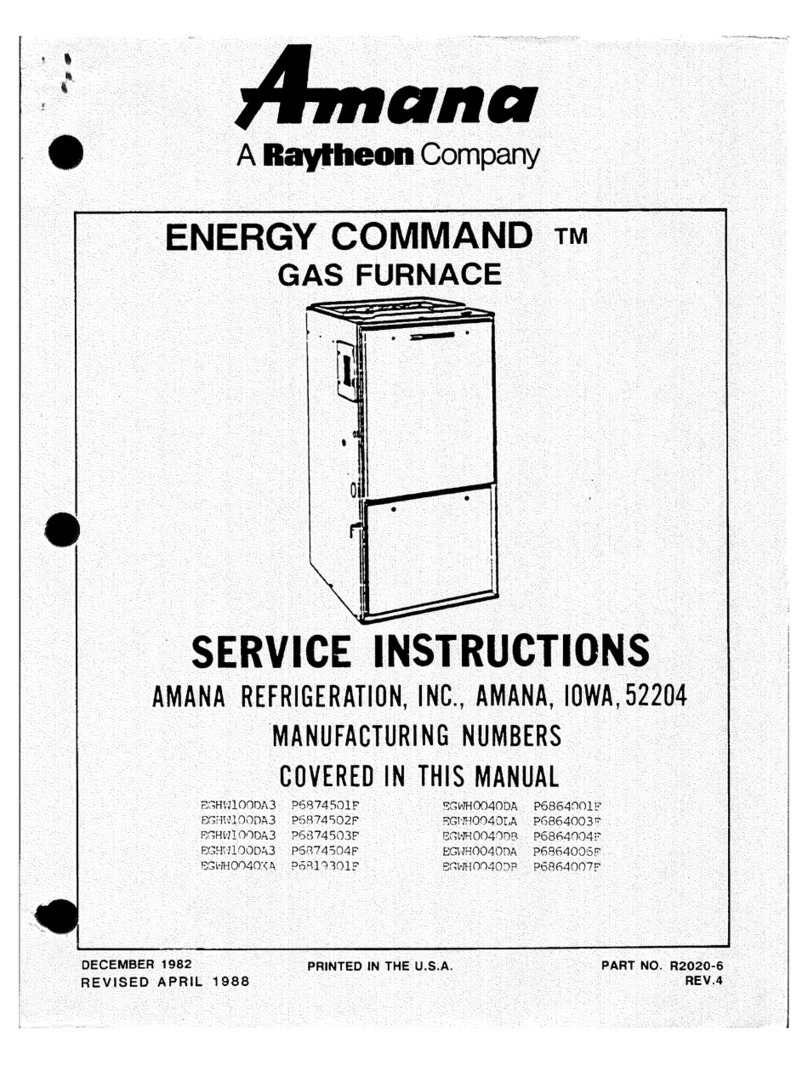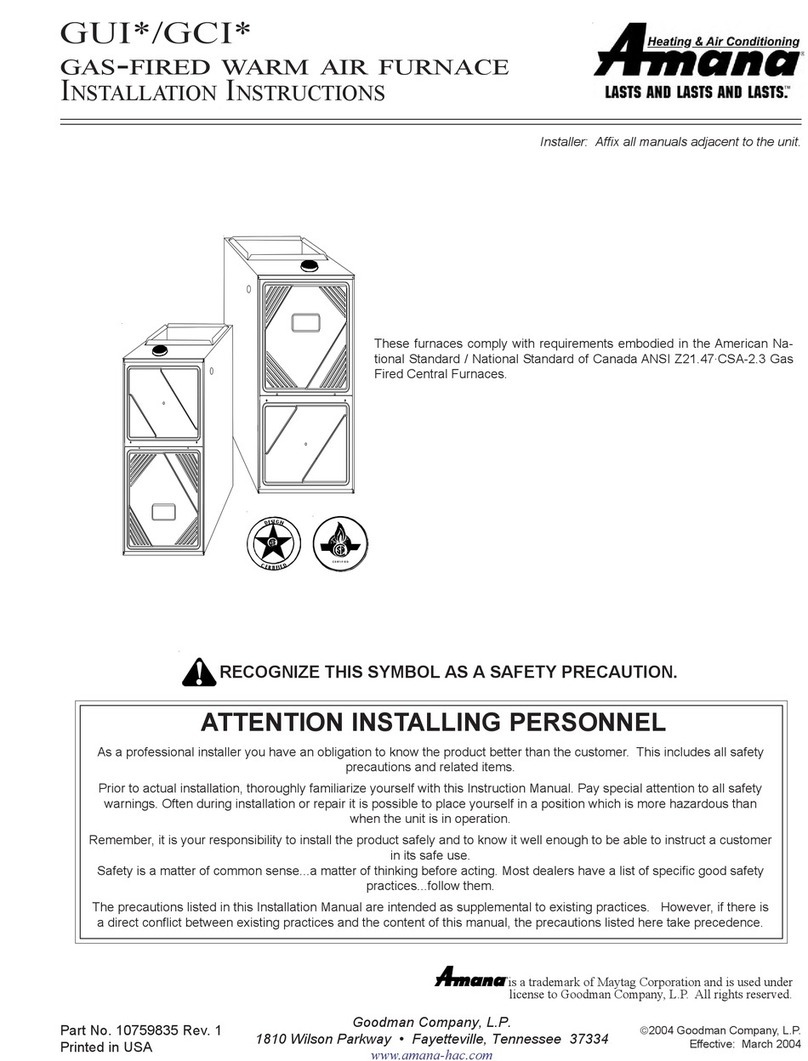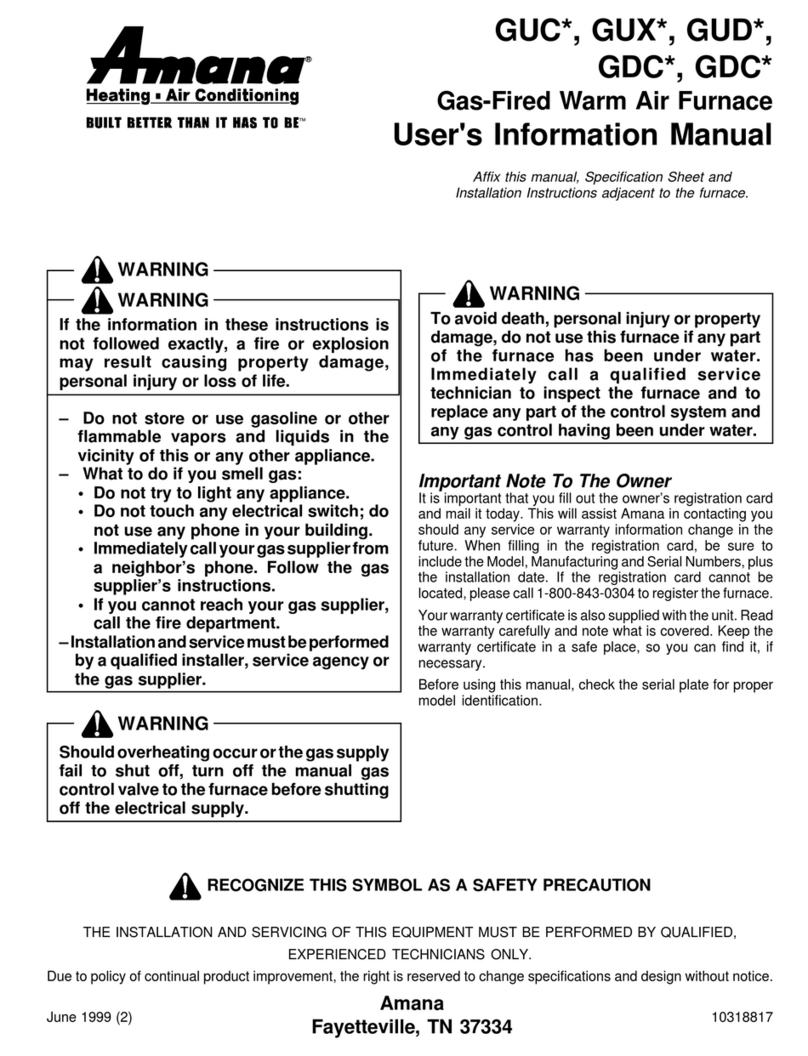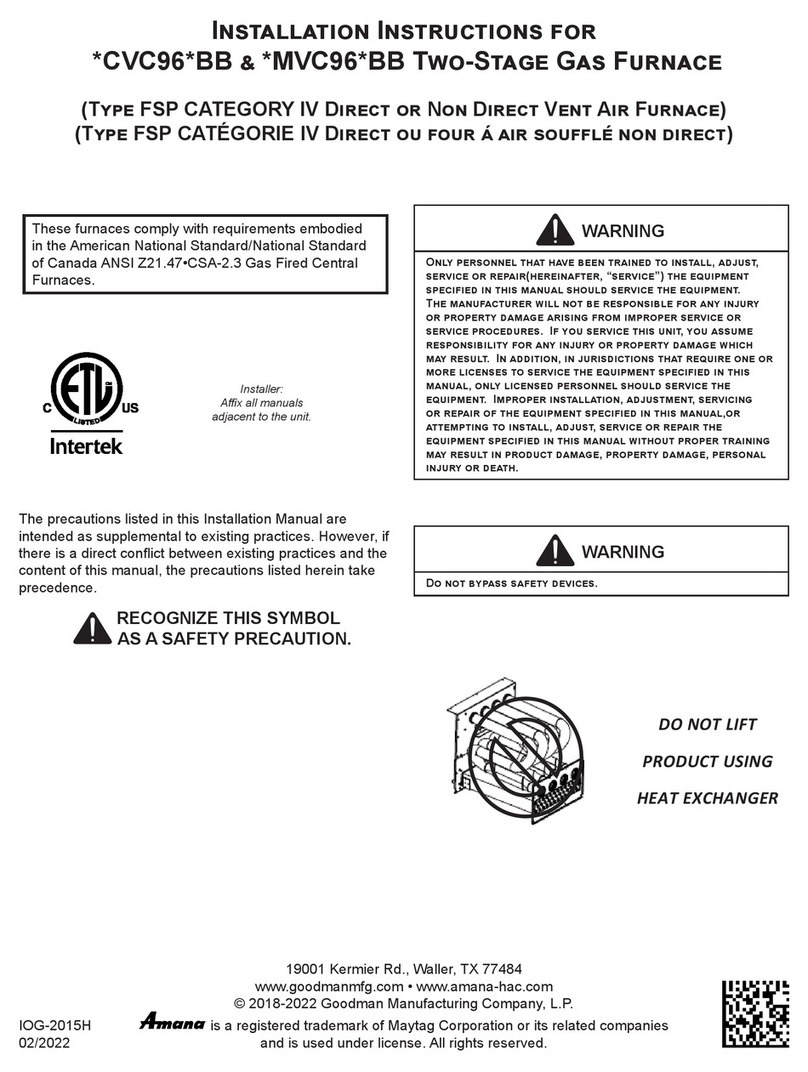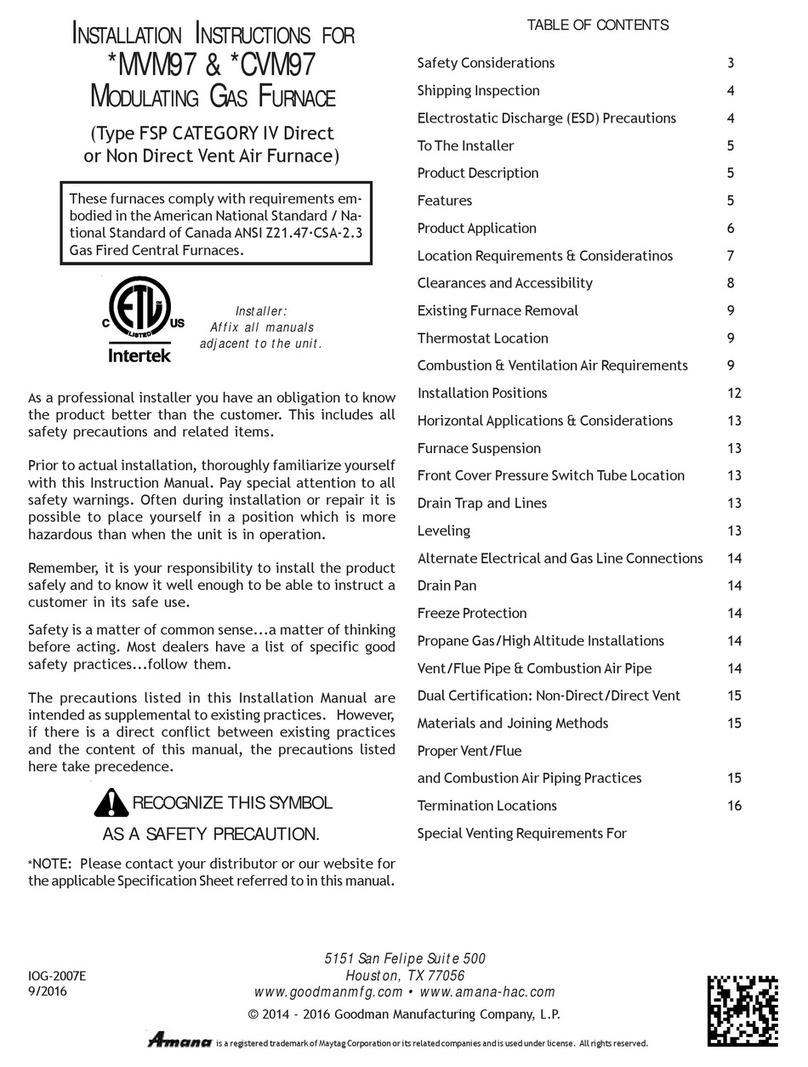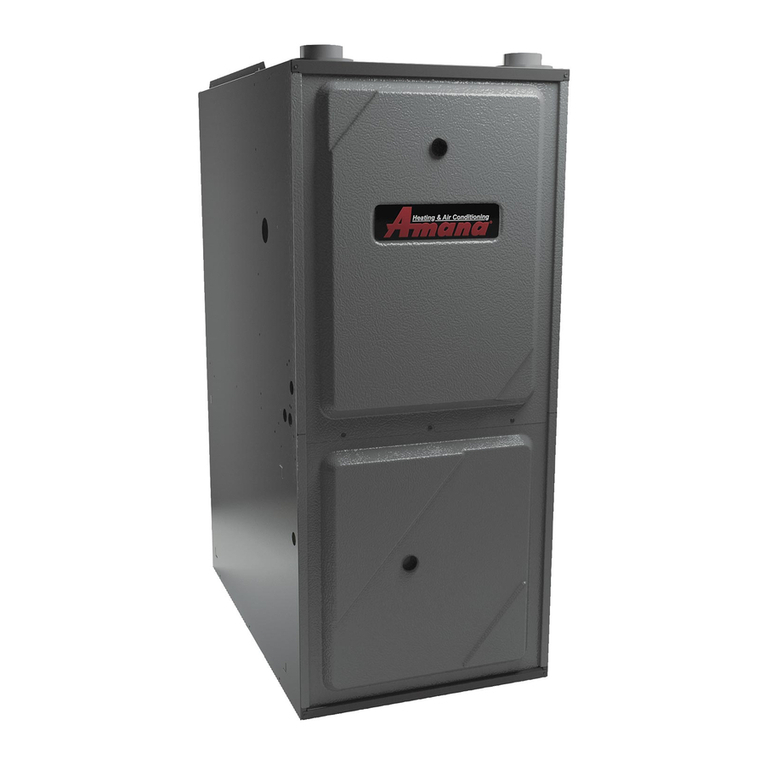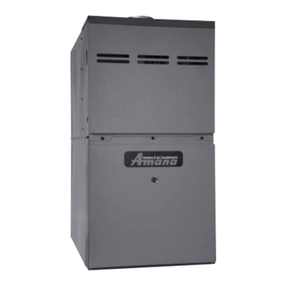
7
• The vent system is permanently installed per these
installation instructions.
• Aroomthermostatisusedtocontrolthefurnace. Fixed
jumpersthat provide continuousheatingCANNOT be
used.
• Returnairductsareprovidedandsealedtothefurnace.
• A return air temperature range between 60ºF (16ºC)
and80ºF(27ºC)ismaintained.
• Air filters are installed in the system and maintained
during construction, replaced as appropriate during
construction,and uponcompletionofconstruction are
replaced.
• The input rate and temperature rise are set per the
furnace ratingplate.
• 100% outside air is provided for combustion air
requirementsduringconstruction.Temporary ducting
can be used.
NOTE: Do not connect the temporary duct directly to
the furnace. The duct must be sized according to the
instructions under Combustion and Ventilation Air
Requirements,Section5.3.3.
•The furnace heat exchanger, components, duct
system,airfiltersand evaporator coils are thoroughly
cleanedfollowingfinalconstruction clean up.
• Allfurnaceoperatingconditions(includingignition,input
rate, temperature rise and venting) are verified
according to these installation instructions.
NOTE:TheCommonwealth ofMassachusetts requiresthatthe
followingadditionalrequirementsmustalsobemet:
• Gasfurnaces must be installedbya licensed plumber
orgas fitter.
• AT-handle gas cock must be used.
• Ifthe unit is to beinstalledinanattic, the passageway
to and the service area around the unit must have
flooring.
T
O
PREVENT
PROPERTY
DAMAGE
,
PERSONAL
INJURY
OR
DEATH
DUE
TO
FIRE
,
DO
NOT
INSTALL
THIS
FURNACE
IN
A
MOBILE
HOME
,
TRAILER
,
OR
RECREATIONAL
VEHICLE
.
WARNING
To ensure proper furnace operation, install, operate and
maintain the furnace in accordance with these installa-
tion and operation instructions, all local building codes
and ordinances. In their absence, follow the latest edition of
the National Fuel Gas Code (NFPA54/ANSI Z223.1), and/or
CAN/CSA B149 Installation Codes, local plumbing or waste
watercodes,andotherapplicablecodes.
2. Firmly touch a clean, unpainted, metal surface of the
furnaces near the control. Any tools held in a person’s
handduring grounding willbedischarged.
3. Service integrated control module or connecting wiring
following the discharge process in step 2. Use caution
nottorechargeyourbodywithstaticelectricity;(i.e.,do
notmoveorshuffleyourfeet, do not touch ungrounded
objects,etc.). Ifyoucomeincontactwithanungrounded
object,repeatstep 2 before touching control or wires.
4. Discharge your body to ground before removing a new
control from its container. Follow steps 1 through 3 if
installing the control on a furnace. Return any old or
new controls to their containers before touching any
ungroundedobject.
TOTHE INSTALLER
Before installing this unit, please read this manual thoroughly
to familiarize yourself with specific items which must be ad-
hered to, including but not limited to: unit maximum external
static pressure, gas pressures, BTU input rating, proper elec-
tricalconnections, circulating air temperaturerise,minimum or
maximum CFM, and motor speed connections, and venting.
Thesefurnaces are designed forCategoryIventing only.
T
O
PREVENT
PROPERTY
DAMAGE
,
PERSONAL
INJURY
OR
DEATH
DUE
TO
FIRE
,
DO
NOT
INSTALL
THIS
FURNACE
IN
A
MOBILE
HOME
,
TRAILER
,
OR
RECREATIONAL
VEHICLE
.
WARNING
P
RODUCT
A
PPLICATION
Thisfurnace is primarilydesignedfor residential home-heating
applications. It is NOT designed or certified for use in mobile
homes,trailersorrecreationalvehicles. Neitherisitdesigned
or certified for outdoor applications. The furnace must be in-
stalled indoors (i.e., attic space, crawl space, or garage area
providedthe garage area is enclosedwithanoperating door).
This furnace can be used in the following non-industrial com-
mercialapplications:
Schools,Officebuildings,Churches,Retailstores,
Nursinghomes,Hotels/motels,Commonorofficeareas
In such applications , the furnace must be installed with the
followingstipulations:
• It must be installed per the installation instructions
providedandper local and national codes.
• It must be installed indoors in a building constructed
on site.
• It must be part of a ducted system and not used in a
freeair delivery application.
• It must not be used as a “make-up” air unit.
• All other warranty exclusions and restrictions apply.
Thisfurnacemay be used as a construction site heater ONLY
ifthefollowingconditionsaremet:
